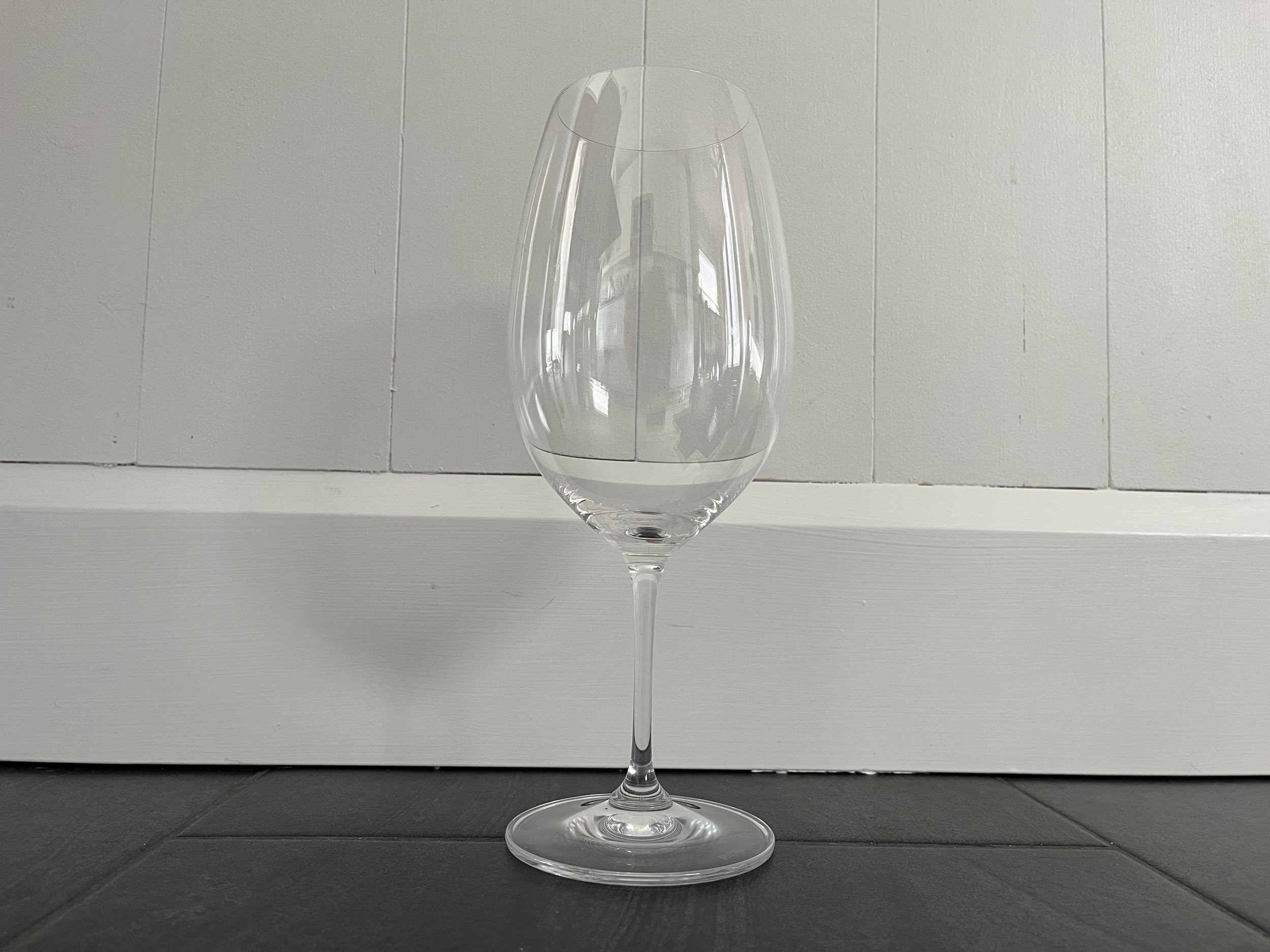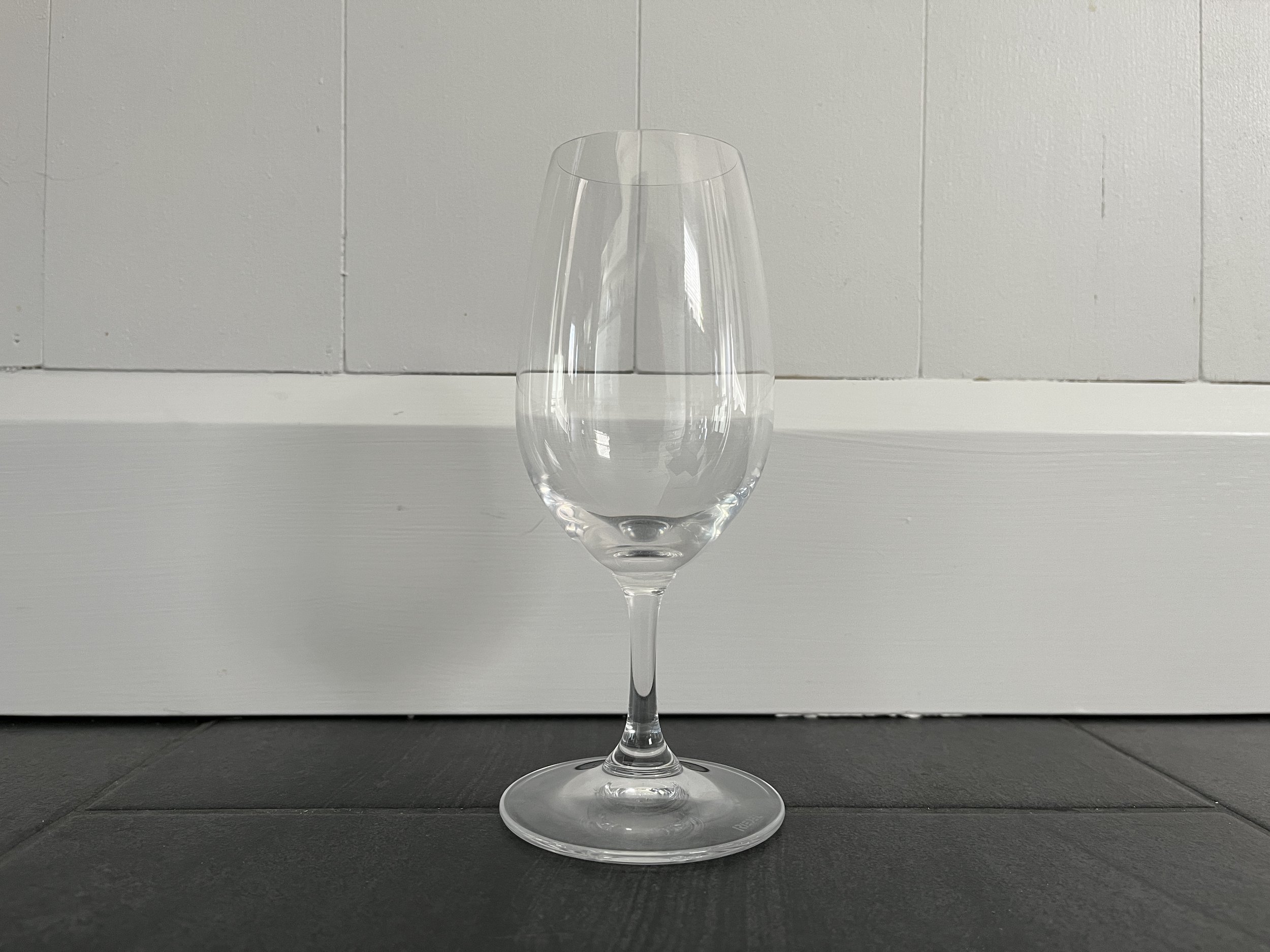Decanting Digest - How to choose the right glass for your wine
/They say the apple never falls far from the tree. Case in point: my father was a verifiable oenophile. Swirling, sipping, and sampling with him over many years solidified my own passion for great wine.
When he passed away a few years ago, I inherited his extensive collection of Riedel Vinum wine glasses. These are some of the best quality wine glasses that can be bought. Each one is crafted from fine crystal and designed for use with a specific varietal: the precisely measured bowl shapes and depths optimally aerate the wine and direct it onto the best place on your palate to appreciate the delicate balance of the varietal’s characteristic flavours.
My dad had two to four glasses each for around a dozen varietals. Each time I open an unusual bottle of wine, I take great joy in flipping through the brochure, pulling the associated glass out of the cupboard, and pouring the wine to the widest part of the bowl as I appreciate the artisanship and think back on happy memories.
Of course, I have glasses I use far more often than others and don’t need to look up each time: my Cabernet Sauvignon, Shiraz, Bordeaux, and Pinot noir glasses all get regular workouts. And so, I told you all of that to tell you this: own dozens of wine glasses if that’s what brings you joy, but know that it’s not at all necessary if you know what you like and will use often. A set of four of each of the glass types listed below will set you up for looking knowledgeable while entertaining small groups; if you regularly host larger cocktail or dinner parties, increase those numbers accordingly. It can be that simple, if you want it to be.
When selecting wine glasses, go for crystal over glass: crystal is clearer and can be spun much thinner while still being durable, which improves mouth feel and imparts quality.
Here are the four types of wine glasses you need to be ready for any occasion:
Red wine glasses
These will typically be the tallest glass in your collection. A good all-around red wine glass will have a bowl that is tapered at the top to contain the aroma, is taller than it is wide so there’s plenty of room for swirling, and is still wide enough to expose a good amount of wine to the air when it’s static. This helps red wine with aeration—some people call this letting the wine “breathe”—since exposing it to oxygen softens bitter tannins and releases less desirable compounds, leaving a better wine behind.
White wine glasses
These are typically shorter than red wine glasses. They have bowls that taper at the top and are narrower with less capacity than red wine glasses. Rapid oxidation isn’t as important to enjoying most white wines, so these glasses put more emphasis on capturing the wine’s subtler aromas and positioning your nose closer to the wine’s surface so that you can enjoy them.
Dessert wine glasses
Dessert wines run the gamut, so this is one area where the type you enjoy most often will affect your selection. Brandy snifters with very short stems and wide bowls designed to be warmed by the hands are very different from, for example, port or ice wine glasses that look like a miniature version of the white wine glasses described above. The latter is perhaps the closest thing to a catch-all, but on this one, you do you.
Pinot noir/Chardonnay glasses
This fourth set of glasses is not at all necessary, especially if your household doesn’t drink these two varietals very often, but it may be worth picking some up if you’ll make use of them. These glasses have a bowl that’s just as wide as it is tall with a wide opening, which maximizes surface area and allows plenty of oxygen to reach and aerate these lightly oaked wines. Technically, a professional would tell you that the stem lengths and bowl shapes on Pinot noir and Chardonnay glasses should be slightly different. But only a truly eagle-eyed guest would ever notice, so in the spirit of enjoying wine without pretentiousness, don’t hesitate to use one glass interchangeably for both.
Cheers!















